Stand-up paddleboarding has taken the water sports world by storm in recent years.
This exciting activity combines elements of surfing and kayaking, offering a unique way to explore lakes, rivers, and oceans.
As its popularity continues to grow, more people are discovering the joys of gliding across the water’s surface while standing on a board.
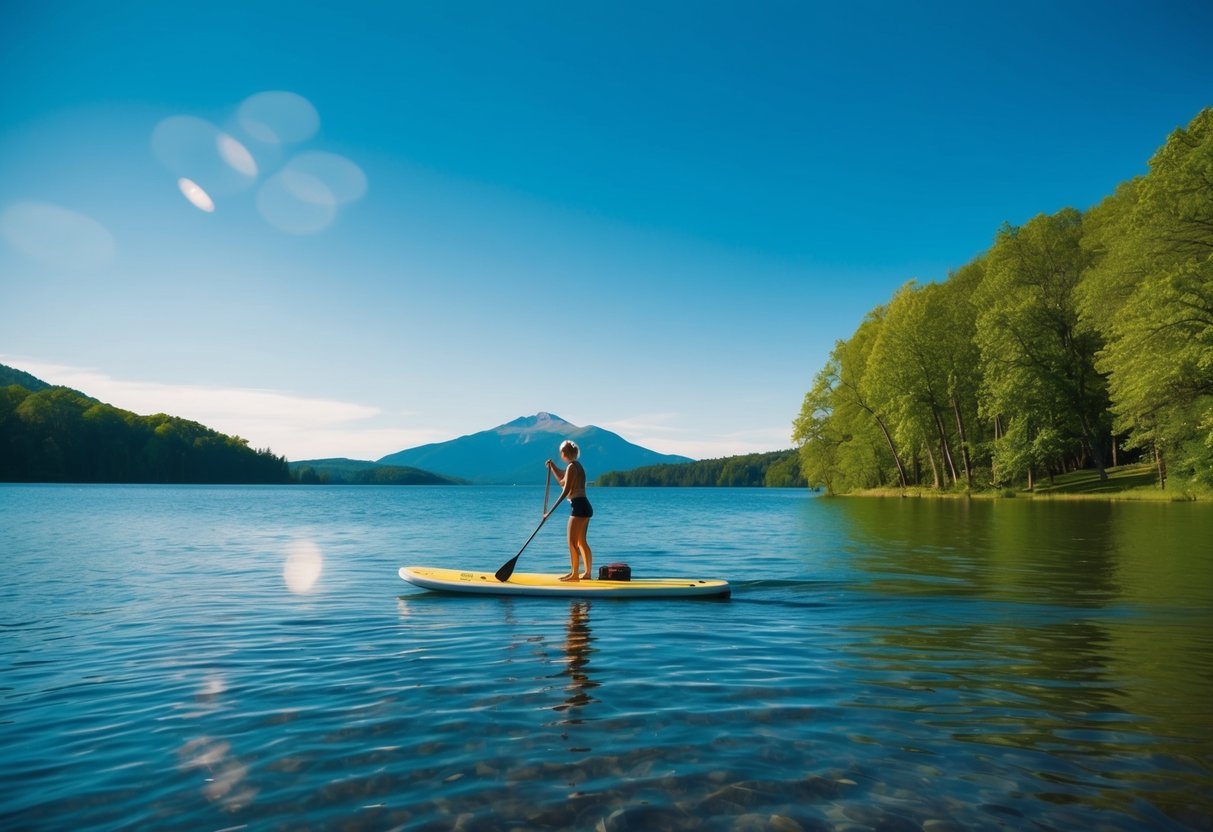
You might be surprised to learn that stand-up paddleboarding has a rich history and some fascinating facts behind its rise to fame. From its ancient roots to its modern-day resurgence, this versatile sport has captured the hearts of adventure seekers and fitness enthusiasts alike.
Get ready to dive into eight fun facts that will give you a new appreciation for the world of stand-up paddleboarding.
1) SUP originated in Hawaii
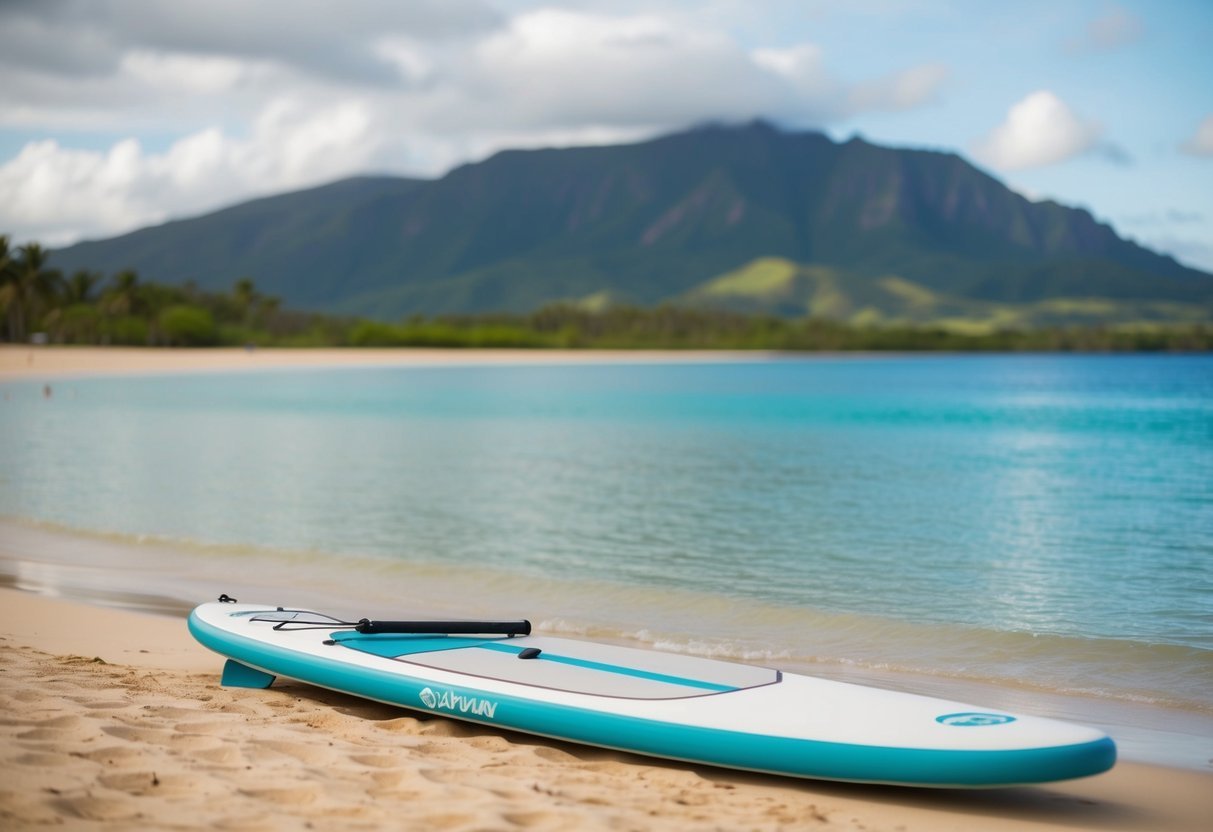
You might think stand-up paddleboarding is a new trend, but its roots go way back to the Hawaiian islands.
The sport has ancient Hawaiian origins, where locals used long boards and paddles for fishing and transportation.
In the 1940s, Waikiki beach boys started standing on their surfboards with paddles to get a better view of incoming waves and their students.
This technique allowed them to spot swells earlier and keep an eye on their surfing pupils.
The modern SUP revival kicked off in Hawaii during the 2000s.
Legendary surfers like Laird Hamilton and Dave Kalama popularized the sport by using paddles to catch waves on big days when traditional surfing wasn’t possible.
From its humble beginnings as a practical tool for Hawaiian fishermen to a fun way for surf instructors to teach, SUP has evolved into the global water sport you know today.
Next time you’re out paddling, remember you’re part of a tradition that spans centuries and began in the beautiful waters of Hawaii.
2) Laird Hamilton boosted SUP popularity
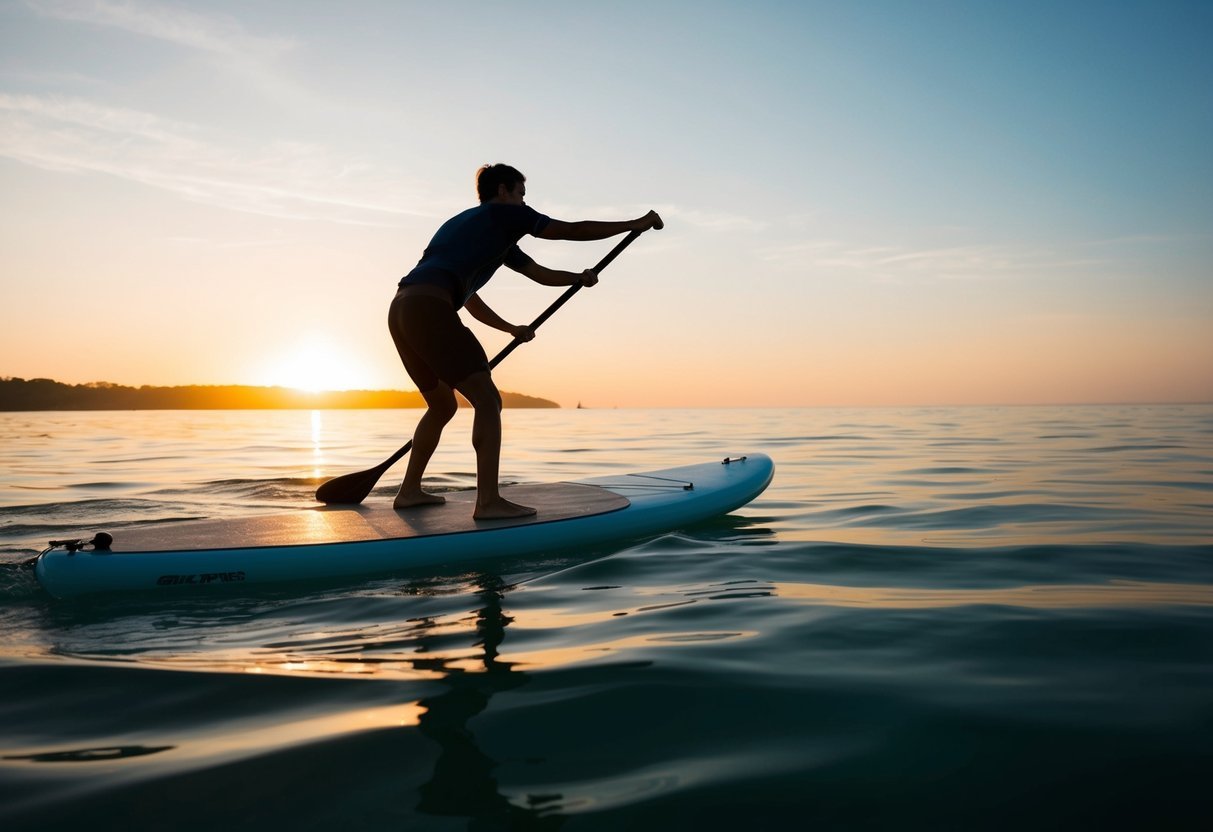
You might know Laird Hamilton as a big-wave surfing legend, but he’s also a key figure in the rise of stand-up paddleboarding (SUP).
This Hawaii-raised athlete helped bring SUP into the mainstream in the early 2000s.
Hamilton started using SUP as a way to train when the surf was down.
In 2002, he caused quite a stir when he paddled out on a SUP during a six-foot swell in Malibu, California.
What made this moment even more memorable? Hamilton was wielding a paddle with a huge American flag.
This eye-catching display caught people’s attention and sparked interest in the sport.
Hamilton’s influence didn’t stop there.
He continued to promote SUP, showcasing its versatility as both a workout and a way to catch waves.
His high-profile status in the surfing world helped legitimize SUP as a serious water sport.
Thanks in part to Hamilton’s efforts, you can now find stand-up paddleboards in lakes, rivers, bays, and oceans worldwide.
His contribution to SUP’s popularity has helped turn it into a thriving industry and a beloved pastime for water enthusiasts everywhere.
3) SUP boards are longer than surfboards
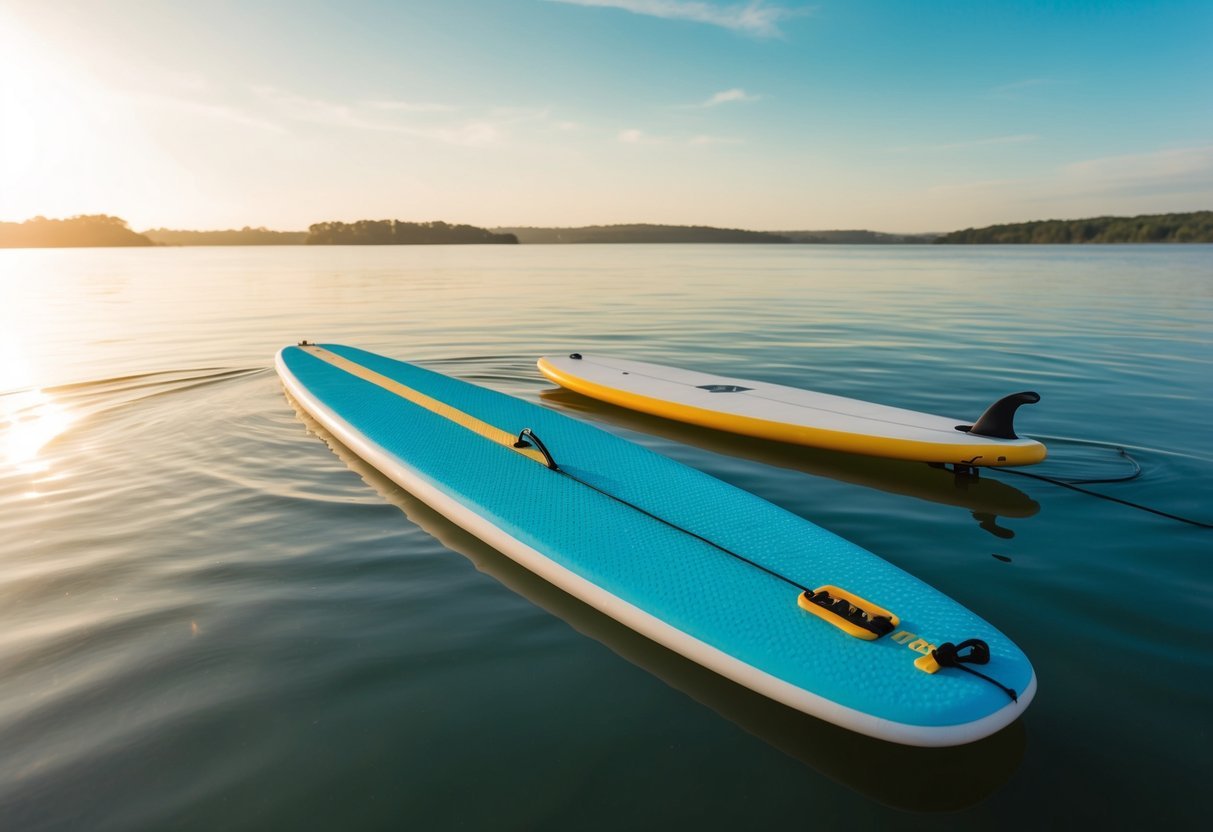
When you’re out on the water, you might notice that SUP boards are typically wider, thicker and longer than surfboards.
This extra size isn’t just for show – it serves a purpose.
The longer length of a SUP board gives you more stability as you paddle around.
It’s like having a bigger platform to stand on, which makes balancing easier, especially when you’re just starting out.
Stand up paddle boards are designed to glide over water, while surfboards are built for riding waves.
This difference in purpose is why SUPs need that extra length.
You’ll find that most SUP boards range from 9 to 12 feet long.
Surfboards, on the other hand, usually max out around 8 feet.
This extra length on a SUP board helps you cruise smoothly across calm waters or lakes.
Don’t worry though – despite their size, SUPs are still manageable.
Many are inflatable, making them easy to transport and store.
So you can enjoy the stability of a longer board without the hassle of lugging around a massive piece of equipment.
4) SUP Yoga is a growing trend
You might have heard about yoga, but have you tried it on a paddleboard? SUP yoga is taking the fitness world by storm.
It combines the zen of yoga with the thrill of being on the water.
Imagine doing your downward dog while floating on a lake or ocean.
Pretty cool, right? SUP yoga adds an extra challenge to your practice by testing your balance on an unstable surface.
SUP yoga enhances the benefits of traditional yoga with the added bonus of being in nature.
You’ll feel the gentle rocking of the water as you move through your poses.
Don’t worry if you’re new to this.
Many beginners start by practicing on a board on the beach or in a pool.
This helps build strength and flexibility before hitting the open water.
SUP yoga isn’t just about the workout.
It’s a unique way to connect with nature and find your inner peace.
Plus, it’s a great excuse to spend more time outdoors and on the water.
5) SUP is great for core strength
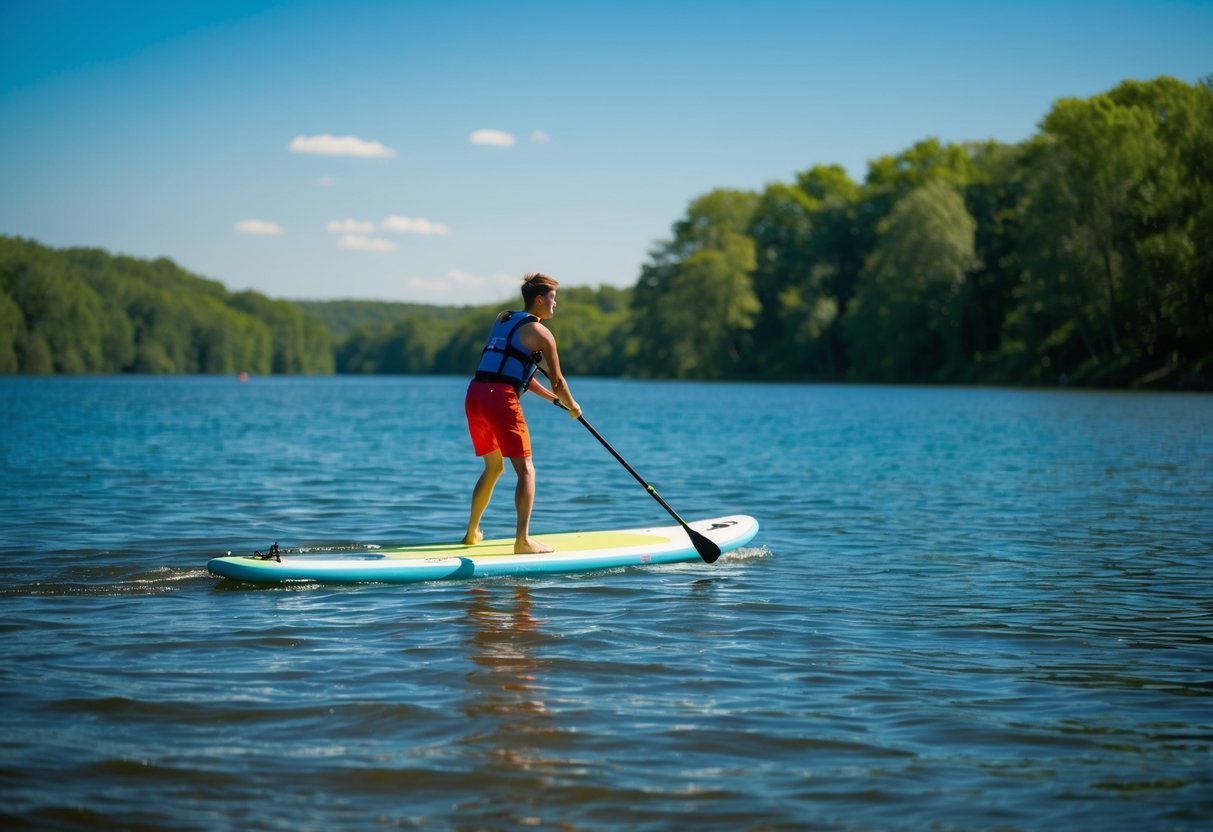
Stand-up paddleboarding is an awesome way to work your core muscles.
As you balance on the board and paddle through the water, your abs and back are constantly engaged.
You might not even realize it, but your core is working overtime to keep you upright.
Every stroke you take requires your midsection to stabilize your body.
The constant balancing act on a paddleboard makes your muscles work together in harmony.
This full-body coordination is key for developing strong core muscles.
Even when the water is calm, you’re still getting a killer ab workout.
Small adjustments to maintain balance keep those core muscles firing.
Want to kick it up a notch? Try paddling in choppier waters or doing some SUP yoga.
These challenges will really put your core strength to the test.
The best part? You’re having so much fun on the water that you hardly notice what a great workout you’re getting.
It’s like sneaking in a gym session while enjoying the outdoors.
6) The first SUP race was in 2007

You might be surprised to learn that organized SUP racing is a relatively recent phenomenon.
The first stand-up paddle specific event took place in 2007, marking a significant milestone in the sport’s history.
This groundbreaking race helped put SUP on the map as a competitive pursuit.
It paved the way for future events and competitions, sparking interest among paddlers and spectators alike.
The following year, in 2008, the sport saw another major development.
The “Battle of the Paddle” race was organized by surfing legend Gerry Lopez and Rainbow Sandals.
This event offered a whopping $25,000 prize purse, attracting top paddlers from around the world.
These early races set the stage for SUP’s explosive growth as a competitive sport.
Today, you can find SUP races of all levels, from local fun runs to international championships.
Whether you’re a casual paddler or an aspiring pro, there’s a race out there for you to test your skills and have a blast on the water.
7) SUP can be done on rivers and lakes
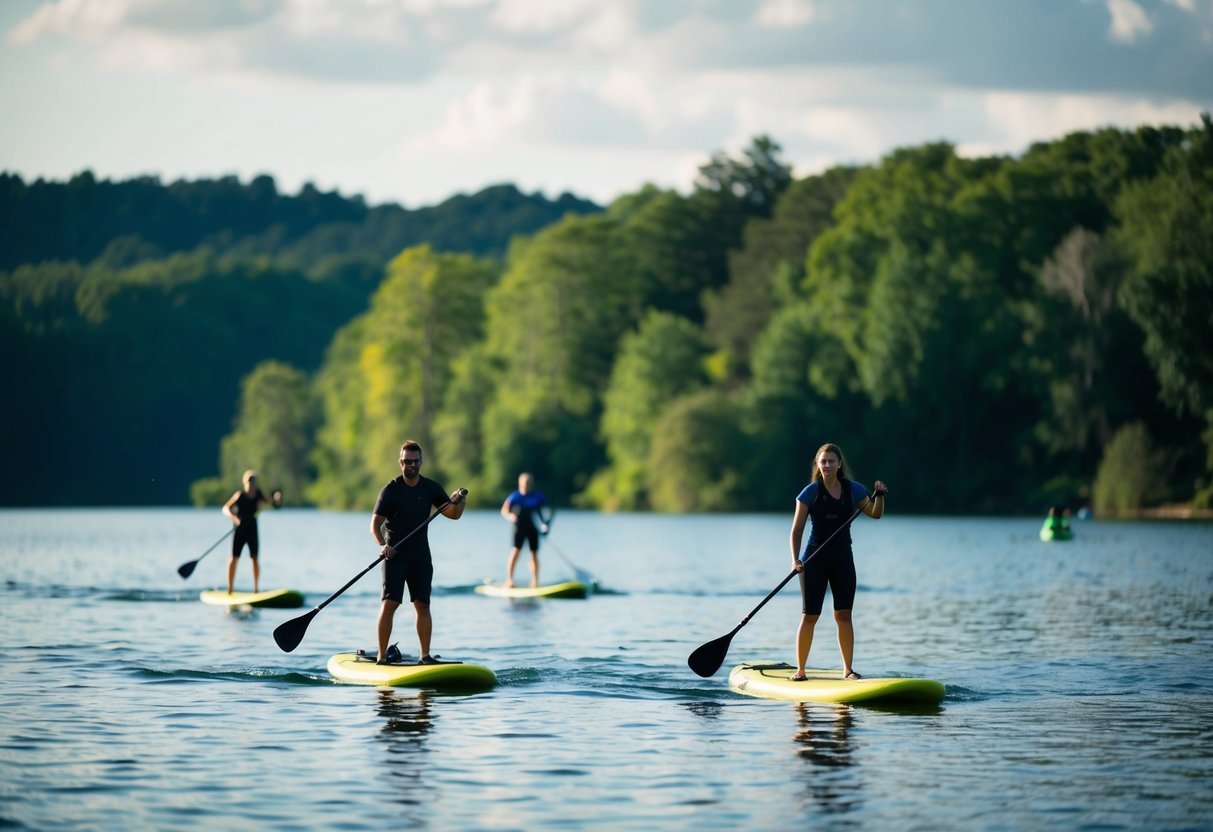
You don’t need to live near the ocean to enjoy stand-up paddleboarding.
SUP is versatile and can be done on various bodies of water, including rivers and lakes.
Rivers and lakes offer fresh experiences for paddleboarders.
You can explore calm waters or challenge yourself with gentle rapids, depending on your skill level.
Lakes provide a serene environment for SUP.
You can paddle across mirror-like surfaces, taking in the surrounding nature and wildlife.
It’s a great way to unwind and connect with the outdoors.
Rivers add an extra thrill to your SUP adventure.
You can navigate through mild currents and riffles, improving your balance and paddling techniques.
Just make sure to choose routes suitable for your abilities.
SUP’s popularity has grown partly because of its accessibility.
As long as you’re within driving distance of a body of water, you can enjoy this fun activity.
Remember to always follow safety guidelines and wear a life jacket when paddleboarding on rivers or lakes.
With the right precautions, you can have a blast exploring inland waters on your SUP.
8) Advanced paddlers surf on SUP boards
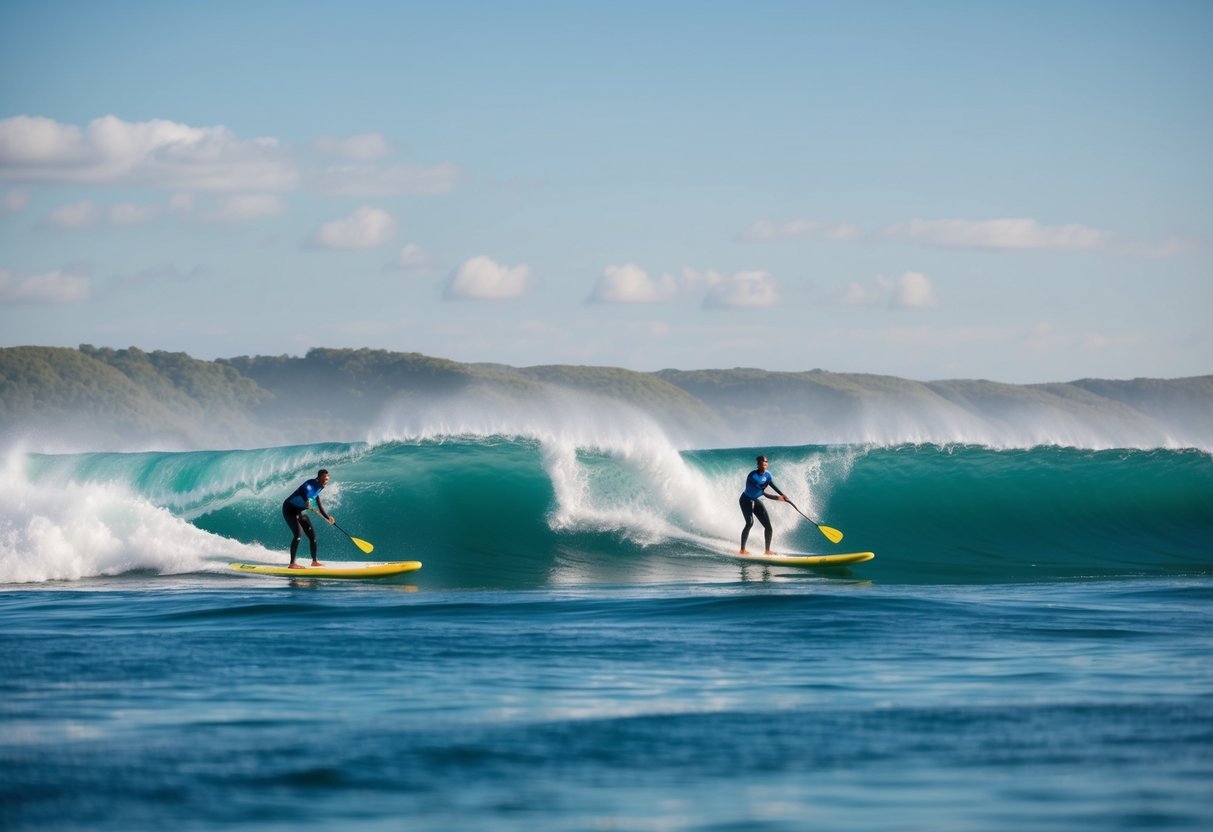
Once you’ve mastered the basics of paddleboarding, you might want to take it up a notch.
That’s where SUP surfing comes in.
It’s like regular surfing, but with a bigger board and a paddle.
You’ll need a special surf SUP board for this.
These boards are typically shorter and more maneuverable than regular paddleboards.
The Lifetime Freestyle is a popular choice for beginners.
When you’re ready to catch a wave, you’ll paddle towards the shore.
As the wave approaches, you’ll need to turn your board and get into a surf stance.
Your paddle becomes your secret weapon for balance and steering.
It’s not easy at first, but with practice, you’ll be riding waves like a pro.
Some advanced paddlers even tackle big swells and perform tricks.
Just remember to always wear a leash and PFD for safety.
SUP surfing offers a unique thrill.
You get the rush of surfing combined with the versatility of paddleboarding.
It’s no wonder more and more paddlers are giving it a try.
History of Stand-Up Paddleboarding
Stand-up paddleboarding’s roots stretch back thousands of years, but it’s seen a massive surge in popularity recently.
Ancient cultures pioneered early forms, while modern enthusiasts transformed it into a global water sport phenomenon.
Ancient Origins
Stand-up paddling has ancient roots.
Cultures across Africa and South America used similar techniques for fishing, travel, and even warfare.
They stood up in canoes or on boards, propelling themselves with long sticks.
In Peru, fishermen rode reed boats called “caballitos de totora.” They used long bamboo poles to navigate and catch waves back to shore.
Meanwhile, African warriors stood in dugout canoes, wielding spears that doubled as paddles.
Polynesians were early adopters too.
They mastered the art of surfing and likely incorporated standing and paddling techniques in their watersports.
Modern Popularization
Fast forward to the 20th century, and you’ll find the birthplace of modern stand-up paddleboarding in Hawaii.
In the 1940s, Waikiki beach boys started using outrigger canoe paddles while standing on their longboards.
This gave them a better view of incoming waves and their surfing students.
Hawaiian surf instructors like Duke Kahanamoku and Leroy and Bobby AhChoy popularized this technique.
They could catch more waves and navigate crowded breaks more easily.
In the early 2000s, big wave surfers like Laird Hamilton brought SUP into the spotlight.
They used it for training and to ride massive swells.
This exposure sparked global interest, and SUP quickly evolved into a diverse sport with racing, touring, and fitness applications.
Cultural Impact
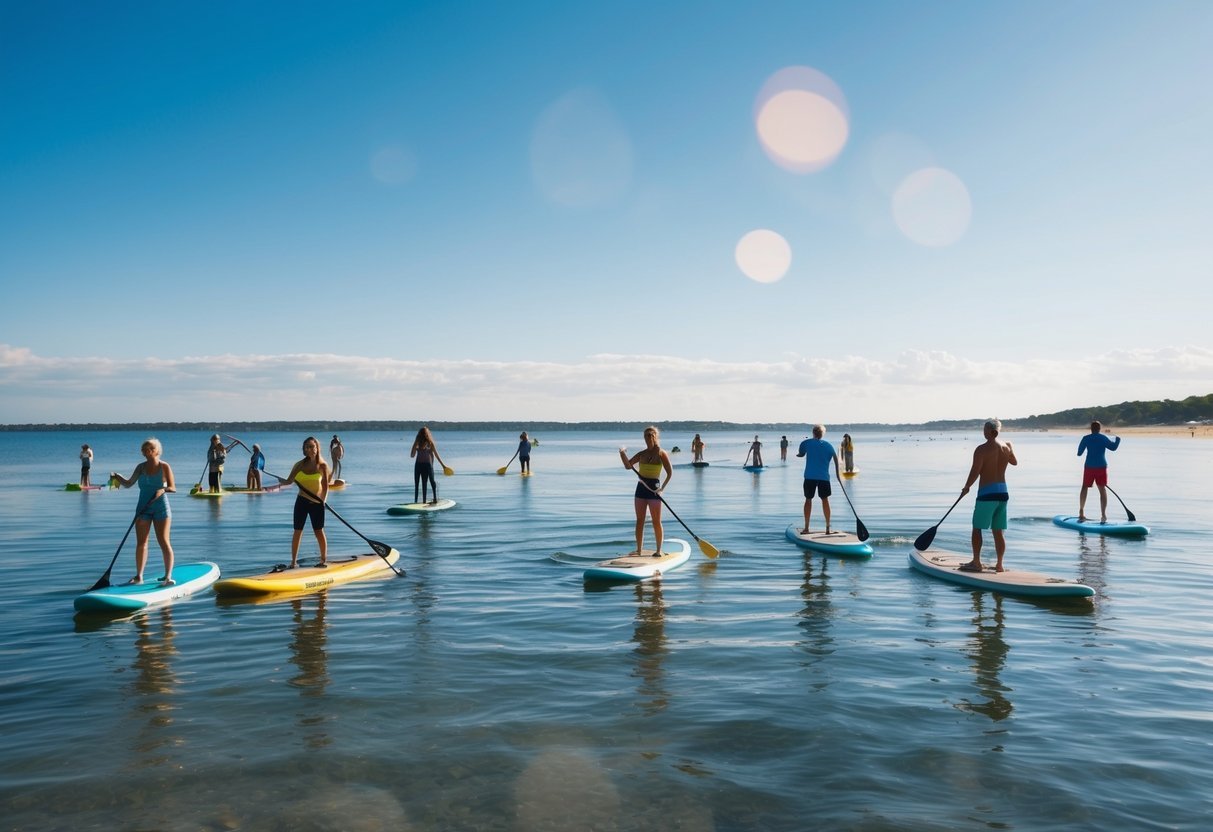
Stand-up paddleboarding has made waves beyond the water, influencing fitness trends and environmental awareness.
Its growing popularity has reshaped how people approach outdoor activities and water conservation.
Expansion into Fitness
You’ve probably noticed more people carrying paddleboards to the gym.
SUP yoga has become a hit, combining balance and core strength with meditative practices.
Fitness enthusiasts love the full-body workout paddleboarding offers.
Many gyms now feature paddleboard-inspired exercises in their routines.
You can find SUP-specific fitness classes that simulate the sport on dry land.
These workouts help you prepare for real paddleboarding experiences and improve your overall fitness.
Environmental Awareness
As you paddle, you’re likely to develop a deeper connection with nature.
This bond often leads to increased environmental consciousness among SUP enthusiasts.
Many paddleboarders participate in waterway clean-up events, collecting trash while enjoying their sport.
You might notice SUP groups organizing eco-friendly tours, educating participants about local ecosystems.
The sport has also inspired innovations in sustainable board production.
You can now find paddleboards made from recycled materials or bamboo, reducing the environmental impact of manufacturing.
Frequently Asked Questions
Stand-up paddleboarding has exploded in popularity, with an interesting history and unique characteristics that set it apart from other water sports.
Let’s dive into some common questions about this fun activity.
When did stand up paddle boarding hit the mainstream?
SUP really took off in the early 2000s.
Big wave surfing legend Laird Hamilton helped to popularize it.
He started using a paddle to propel his longboard, catching the attention of water sports enthusiasts everywhere.
Who originally created stand up paddle boarding?
While modern SUP gained traction recently, its roots go way back.
You might be surprised to learn that ancient Hawaiians were the original paddleboarders.
They used long boards and paddles for fishing and transportation between islands.
What are some interesting bits of trivia about paddle boarding?
Did you know SUP boards are typically longer than surfboards? This extra length gives you more stability on the water.
Another fun fact: SUP yoga has become a trendy workout, combining the balance challenge of paddleboarding with zen yoga poses.
How did stand up paddle boarding get its name?
It’s pretty straightforward – you stand up on a board and use a paddle! The name describes exactly what you’re doing.
Simple and to the point, just like the sport itself.
Can paddle boarding be considered a legit sport?
Absolutely! SUP isn’t just for leisure – it’s a serious workout.
You’ll be engaging your core muscles the entire time you’re on the board.
Plus, there are competitive SUP races and even SUP surfing competitions.
What makes paddle boarding such an enjoyable activity?
SUP offers a unique combo of relaxation and exercise.
You get to be out on the water, soaking up the scenery, while also giving your body a great workout.
It’s versatile too – you can paddle on calm lakes or catch waves in the ocean.


